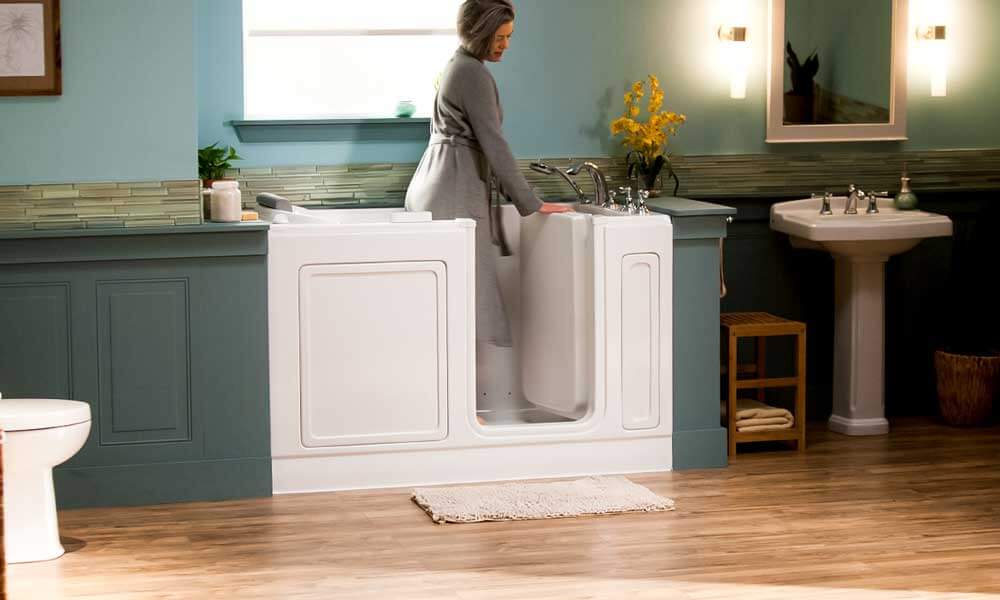
Have you ever wondered if you needed to get a walk-in tub in your bathroom? If you’re contemplating getting one, then this article is for you. Tubs, in general, are a great way to wind down after a long day, get clean, and soak in a nice aromatic bath. It’s a relaxing pastime, and it justifies why you should consider having bathtubs in your bathroom.
If you’re familiar with bathtubs, walk in tubs are their better and safer counterparts. Often praised for their additional safety features and many benefits, walk in tubs have become popular over the years. Regular bathtubs can be dangerous due to their lack of safety features and slippery surfaces— making it easy for users to fall and sustain injuries.
With any home upgrade, a walk in tub comes with some pros and cons. In this article, we’ll discuss the benefits of getting a walk in tub and a few disadvantages it comes along with.
The Benefits of a Walk In Tub
Walk in tubs are excellent choices if you’re looking for a safe alternative for bathing. They’re also relatively easy to clean and have several additional features you can’t get in a regular bathtub. Although they may be costly in the beginning, they make a worthwhile investment.
Added Safety
Walk-in tubs are famous for their safety features which are their prime advantage. Users don’t need to enter the tub by climbing over a tall wall. A walk-in tub reduces the chances of slips or falls because users can enter the shallow tub by opening a door. They also come with handrails, anti-scald valves, and non-slip flooring.
Easy to Clean
Walk-in tubs are relatively easy to clean than your Honeywell thermostats. Bathrooms can fall victim to excessive moisture, which can result in mold and mildew problems. This can be a big problem since removing black mold can be pretty challenging. Since these tubs are usually for people with mobility issues, they come with self-cleaning features such as self-cleaning water lines to prevent bacteria build-up.
Additional Features
Walk in tubs also come with additional features such as hydrotherapy. This is great for those with reduced mobility. Warm water doesn’t just benefit users hygienically. They can also provide relief for joint pain and healing for skin conditions such as burns or ulcers. Walk-in tubs also have a chair so users can sit in comfort as they enjoy a nice, warm bath.
The Drawbacks of a Walk In Tub
Walk in tubs have several advantages, but they’re not perfect. They also come with several disadvantages and might not be the right choice for every user. Before you make up your mind, let’s take a look at the drawbacks of a walk in tub.
Time to fill and drain
Since the tub needs to be filled while the door is closed, it can take a while to fill and drain. This is because the user needs to enter the tub and close the door before turning on the water. To drain the tub, the user needs to stay in the tub and wait for the water to fully drain before they can exit the tub— meaning, they need to spend time sitting in an almost empty tub, which reduces the overall convenience of the experience.
Cost
The cost of a walk in tub can be a bit pricy. Installing a walk in tub can be expensive since the tub itself can cost you $3,000 to $10,000. If you decide to go with a luxury model, it can cost you at least $15,000. Remember that these prices exclude the installation cost, which can cost you an average of $1,500. Not to mention, walk in tub installations aren’t covered by Medicare as Durable Medical Equipment, so you would need to pay everything in full, out of your pocket.
Potential flooding
Due to the designs of these tubs, flooding and leakage can happen since it’s challenging to make a perfect seal on a door that can open and close. This means that there is always a chance of water coming out. If the lining is damaged, you might end up with a fully flooded bathroom, which can be a safety hazard.
Wrapping Up
Those with mobility challenges can face many safety issues when using bathtubs due to the combination of hot water, slippery surfaces, and high walls. With a walk in tub, the chances of these accidents happening are reduced significantly. Walk in tubs come with several benefits and drawbacks. However, compared to conventional bathtubs, they are much safer and are great options for mobility-challenged people looking to live independently, and for more safety, you can just add a ring doorbell beside the bathtub.
Dr. Laura Thompson
Related posts
Stay connected
- How LoveOn Chat Is Becoming the Most Versatile AI Companion for Digital UsersThe internet keeps shifting toward hyper-personal interaction, and AI companions are at the center of this shift. What used to be simple chatbots are now evolving into emotionally aware, adaptive, and multi-functional digital partners. Among the new generation of platforms, LoveOn Chat is becoming one... The post How LoveOn Chat Is Becoming the Most Versatile […]
